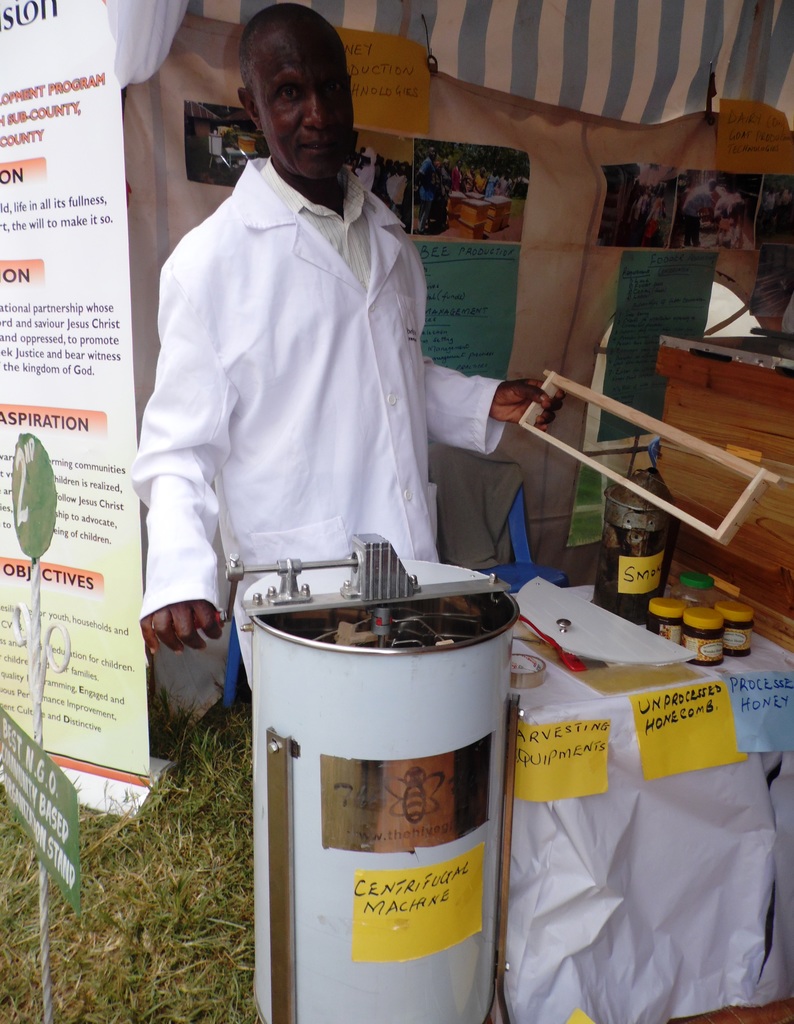A bee rearing agribusiness group is saving close to 30 cent of honey lost through tradition methods of extraction using a quick manual centrifugal machine.
Chairman of Nyabwaroro Self Help Group Ezekiel Ndege said traditional extraction of honey by squeezing and warming caused them a loss of about three litres out of the possible 10 litres.
In squeezing, the dense liquid remains both in the equipment and mulled honeycombs.
“Loss of even half a litre of honey is a painful pinch to business. That is why we started using the centrifugal machine, which can extract three litres at once. Because the machine is enclosed with stainless steel, there is no soaking or leakage as the highly viscous liquid drains to the collecting tap with ease,” Ndege said.
Preventing mammoth loss
It is equally time-saving for such a group, which has 15 beehives. Three-one-litre bars of honey-filled combs are inserted into the machine, which is rotated by hand. Within five minutes, one has three litres of pure honey ready for packaging.
READ ALSO: Former teacher finds money in honey
Ndege, however, insists that the machine is best for use with Langstroth bee hive type, which has two layers of honeycombs per a bar.
Failing to collect three litres honey means Sh2,400 cash loss per beehive per harvesting season.
Whilst use of warm water in the extraction process increases chances of contamination, the machine minimises, chances of entry of any particles.
“At wholesale, one litre is sold at Sh800 and Sh1,000 at retail. Supermarkets, which are our main buyers, do not question the price. It is so because it is of high quality. Warming with water adulterates the honey, which may reduce shelf-life of the product,” he said.
READ ALSO: Young farmer records sweet success with black honey
Why quick honey harvests
Before entering the collecting reservoir, the honey passes through two filters which remove any residues.
For the first time after installation of the beehive, it takes four months to harvest. But subsequent harvests from the Langstroth hive takes three months, the chairman said during the Kisii Agricultural Society of Kenya Show 2016.
The machine only extracts honey, leaving the combs intact. After the empty combs are taken back, the bees will start refilling them, and only repairing the few damaged parts.
READ ALSO: Honey reduce heat stress, increase quality of eggs in poultry
Close to Sh0.5 milkion in honey
The Nyamira County’s Nyamusi Sub-County group harvests 150 litres of honey four times per year. This translates to 600 litres, which earn them Sh480,000 gross income.
The honey comb residue is filtered band processed into candles at their factory for sale.
The cost them Sh80,000.
Ndege can be reached on +254716338690
PHOTO BY LABAN ROBERT.

















Comments powered by CComment